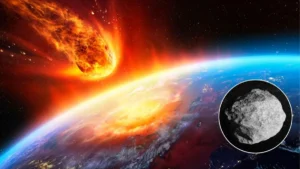
Anne Hoggett, who has been diving for decades near the Great Barrier Reef in northeastern Australia, confirms, with fury, the massive coral bleaching caused by climate change.
“It makes me angry to know that we have the power to prevent it and we don’t do anything quickly enough”emphasizes this marine biologist who, for thirty-three years, has lived and worked on Lagarto Island, near the largest coral reef in the world.
The latter extends for more than 2,300 kilometers along the northeast coast of Australia and It is home to some 1,600 species of fish and 600 types of coral.
Hoggett regularly dives among schools of fish that seek shelter and food there. But the site looks like a cemetery due to the new episode of mass bleaching that devastates this ecological jewel.
This phenomenon is caused by a increase in water temperature causing the expulsion of symbiotic algae that give coral its bright color.
Since February, underwater temperatures around Lizard Island have been 2°C above average. Due, about 80% of the corals diedaccording to the biologist.
Maybe “They suffered too much damage to be able to regenerate”she comments worriedly.
Announced in March by the Australian authorities, this new episode of mass bleaching is the fifth in eight years.
According to aerial surveys, it affects more than 600 reefs locally, and 10% of the Great Barrier Reef is suffering from extreme bleaching, permanently compromising the life chances of most of its corals.
The phenomenon is not limited to Australia. On Monday, the US Oceanic and Atmospheric Observing Agency (NOAA) announced that the planet was experiencing its second largest coral bleaching event in ten years.
“Coral bleaching is becoming more frequent and severe,” said Derek Manzello, coordinator of NOAA’s Coral Reef Observatory, pointing to record-breaking ocean temperatures.
Climate change responsibility
When Hoggett arrived on Lizard Island in the ’90s This phenomenon occurred every decade. But now the coral reefs surrounding the island will experience an episode of this type every year or almost, he warns.
According to scientists, a 2°C increase in temperatures could cause the total disappearance of 95% of the planet’s coral reefs.
Even if the international community’s goal, widely considered unattainable, of limiting this increase to 1.5°C above pre-industrial times is met, 70% of coral reefs could be subject to bleaching.
Billions of dollars have been invested to try to save corals, but for scientist Terry Hughes the culprit is climate change.
“After 50 years of interventions, attempts to restore corals did not modify the ecology of a single reef,” he notes.
The breeding of corals in aquariums, proposed as a possible solution, seems especially chimerical.
“It would take 250 million large corals, each the size of a dinner plate, to increase the coral cover of the Great Barrier Reef by just 1%, and that would cost billions of dollars,” he says.
The only solution is “reduce greenhouse gas emissions as quickly as possible”he states.
Source: https://www.noticiascaracol.com/mundo/gran-barrera-de-coral-australiana-se-encuentra-mas-amenazada-que-nunca-cb20


